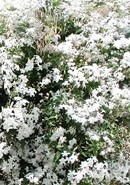
First of all we need to establish that there are only three kinds of jasmine being considered because star jasmine and confederate jasmine are the same plant. Lets begin there.
 Confederate jasmine aka Star jasmine (Trachelospermum jasmoides)
Confederate jasmine aka Star jasmine (Trachelospermum jasmoides)
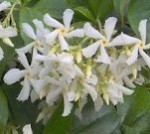 Not a true jasmine, Confederate jasmine is in the milkweed family and is an evergreen vine with fragrant flowers that are used in the perfume industry. It climbs by using holdfasts. It is a native of eastern and southeastern Asia and is used in Thailand to flavor rice. Easy to grow.
Not a true jasmine, Confederate jasmine is in the milkweed family and is an evergreen vine with fragrant flowers that are used in the perfume industry. It climbs by using holdfasts. It is a native of eastern and southeastern Asia and is used in Thailand to flavor rice. Easy to grow.
-
Size: 20-40’ tall or more
Flowers: White; five petals arranged so as to resemble a pinwheel; very fragrant
Leaves: Simple, thick, glossy, oval, 2” long
Hardiness: Zones 8-10 with a few cultivars hardy in zone 7.
 Carolina Jasmine (Gelsemium sempervirens)
Carolina Jasmine (Gelsemium sempervirens)
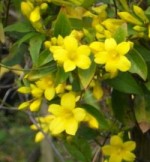 A native of southern United States, Carolina jasmine is an evergreen twining vine that blooms in late winter to early spring and particularly likes the tops of shrubs and trees. Very easy to grow but all parts of the plant are toxic.
A native of southern United States, Carolina jasmine is an evergreen twining vine that blooms in late winter to early spring and particularly likes the tops of shrubs and trees. Very easy to grow but all parts of the plant are toxic.
-
Size: 10-20’ tall
Flowers: Yellow; trumpet shaped; very fragrant
Leaves: Simple, lustrous, dark green, lanceolate, 3/4 – 2 1/2” long
Hardiness: Zones 7-9
 Jasmine aka Poet’s Jasmine (Jasminum officinale)
Jasmine aka Poet’s Jasmine (Jasminum officinale)
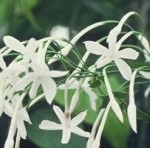 This is the real jasmine, a member of the olive family and a native of tropical and subtropical regions of the Old World. It is a deciduous/semi-deciduous twining vine that produces very fragrant flowers during the summer. Flowers are most fragrant during the evening and are harvested then for perfume. There are other species of true jasmine (J. nudliflorum, J. multiflorum, and J. polyanthum to mention a few) but they are not as readily available. True jasmines are more difficult to grow than the other two “false” jasmines described above.Size: 20-40’ tall
This is the real jasmine, a member of the olive family and a native of tropical and subtropical regions of the Old World. It is a deciduous/semi-deciduous twining vine that produces very fragrant flowers during the summer. Flowers are most fragrant during the evening and are harvested then for perfume. There are other species of true jasmine (J. nudliflorum, J. multiflorum, and J. polyanthum to mention a few) but they are not as readily available. True jasmines are more difficult to grow than the other two “false” jasmines described above.Size: 20-40’ tall
Flowers: White, salverform; buds tinged with pink; very fragrant
Leaves: Pinnate, mid-green leaves with 5-9 elliptical leaflets.
Hardiness: Zones 9-11
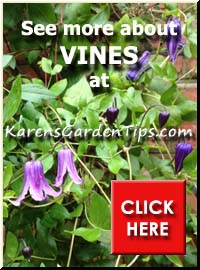 These three jasmines all have very fragrant flowers and attractive foliage. True jasmine (Jasmine officinale), however, can easily be separated from the others by it summer bloom. In addition, it is less hardy, and does not retain it’s leaves as well as the other vines known as jasmine. The yellow flowers of Carolina jasmine are easy to identify but are not a good way to distinguish them from true jasmines because some yellow species of true jasmine exist. And yes, there are more plants that are erroneous called jasmine but these three are the most common. Check the label of the plants you buy, looking at the botanical name to be sure.
These three jasmines all have very fragrant flowers and attractive foliage. True jasmine (Jasmine officinale), however, can easily be separated from the others by it summer bloom. In addition, it is less hardy, and does not retain it’s leaves as well as the other vines known as jasmine. The yellow flowers of Carolina jasmine are easy to identify but are not a good way to distinguish them from true jasmines because some yellow species of true jasmine exist. And yes, there are more plants that are erroneous called jasmine but these three are the most common. Check the label of the plants you buy, looking at the botanical name to be sure.